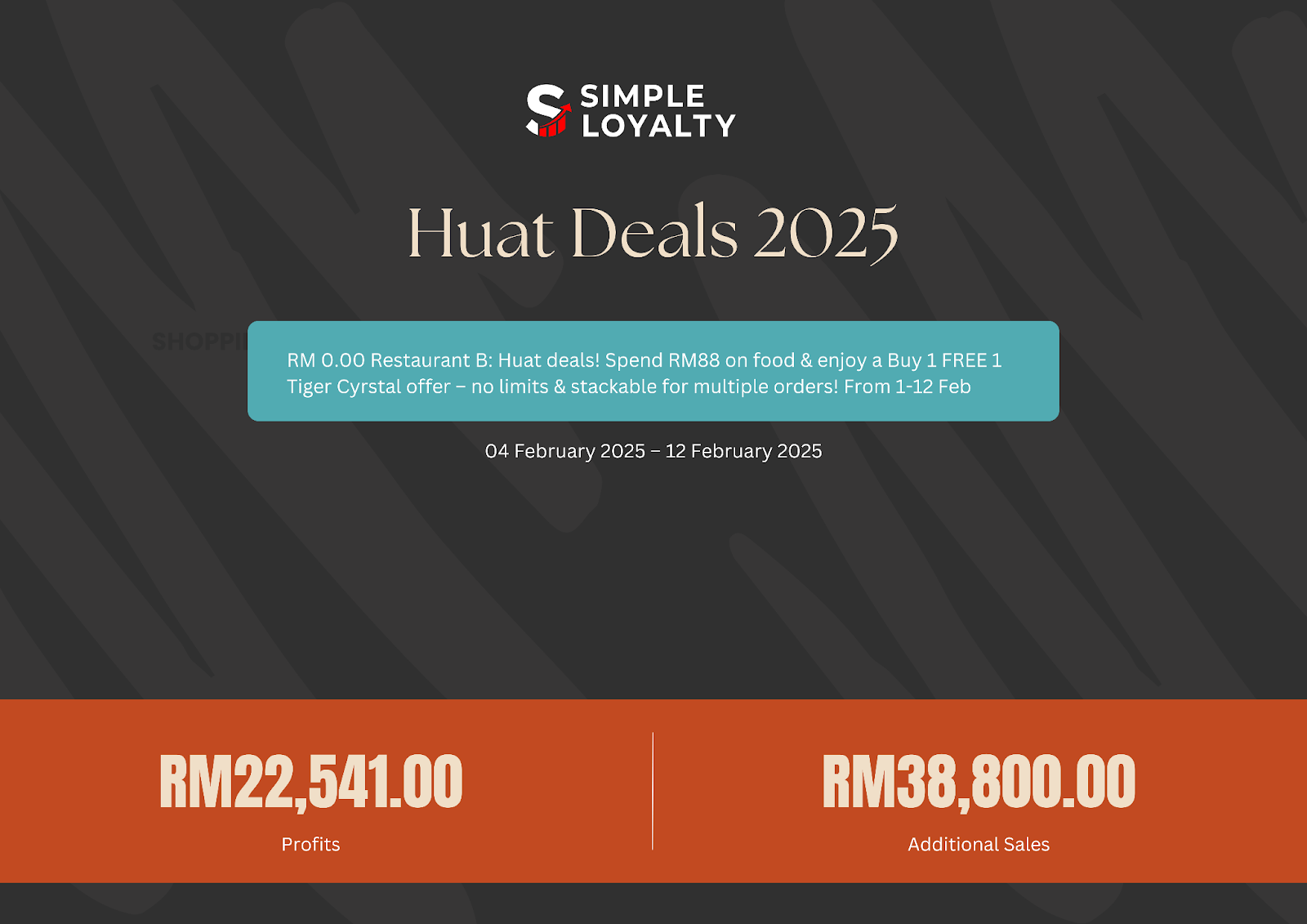
Many restaurant owners launch loyalty programs because “everyone else is doing it”–only to treat them as a checkbox exercise. Without measuring performance, these programs become costly overheads rather than growth engines. From analyzing millions of data points across 200+ brands in Malaysia over 8 years, we’ve identified insights that restaurant owners must understand to ensure their loyalty program drives real business results.
Let’s dive into the key metrics that separate thriving loyalty programs from wasted investments–and how to track them.
Measuring Growth & Retention: The Foundation of Success
A loyalty program’s health hinges on two factors: steady new sign-ups and active retention. Ignoring these metrics is like pouring money into a leaky bucket.
Key Metrics to Track:
- New members:
- How many customers sign up for your loyalty program weekly? Is this number growing, stagnant, or declining?
- What in-store or digital promotions are driving sign ups? Are staff trained to actively promote the program?
- Member activation:
- What percentage of your members have never redeemed a reward?
- Are your entry-tier rewards enticing enough to motivate first-time redemptions (e.g., free items on sign up)?
- Member retention:
- How do you define a “lost” member? (e.g., no visits in 3x their average visit frequency?)
- What strategies do you use to re-engage inactive members?

- New vs existing member ratio:
- A business sustained mostly by existing members (over 50%) risks slow decline, as all customers eventually move on.
The Importance of Tracking, Understanding, and Acting on Metrics
Being able to segment your customer traffic based on key metrics allows you to pinpoint and optimize specific areas of your business. For example:
- If new sign-ups are declining, it signals a potential issue with in-store promotion or customer onboarding.
- Are your promotions visible and compelling? Are staff incentivized to promote the program?
- If most sales are coming from existing customers, the business may not be attracting new customers.
- How are you attracting first-time customers to balance growth?
- If retention is low, it may indicate problems with customer experience or engagement strategies.
- Retention isn’t just about keeping customers—it’s about creating long-term, invested relationships. The difference between an activated customer and a retained customer is the timeline. Activated customers might engage early, but retained customers continue their journey, spending more money, returning frequently, and often becoming brand advocates.
- How do we turn these customers into loyal, long-term advocates? Engagement strategies must go beyond transactional interactions. This includes offering rewards that truly align with customer preferences, ensuring a frictionless redemption process, and introducing new offerings or exclusive experiences that keep these customers invested.
- The goal is to continually engage them with value and build a deeper emotional connection to ensure they stay loyal and become your most vocal promoters.
Monetizing Member Data: Turning Engagement into Revenue
While growing your member base is important, the real value of a loyalty program lies in its ability to drive higher spending from existing customers. Yet, many restaurants lack the tools to turn engagement into profit, relying on guesswork instead of data-driven retargeting strategies.
Effective Retarget Strategies:
- Using instant messaging (SMS/WhatsApp) instead of email: Email open rates for F&B hover only at 34.65%, while SMS/WhatsApp boast 58% baseline open rates.
- Target high-value inactive members: Offer premium incentives (e.g., main dish instead of a drink) can help reactivate customers who previously spent a lot.
- Measuring campaign effectiveness: The cost of sending messages and providing offers must be significantly lower than the total revenue generated from returning customers.
Case Study: Restaurant A
Restaurant A experienced a remarkable 2.5x increase in sales over three months by improving their phone number collections. From March to June, they sent out 6,876 SMS messages, which led to 872 return visits and a conversion rate of 12.68%. With a collection rate of 25.48%, they saw a total sales of RM24,322.

Building on this success, from June to September, they sent out 13,093 SMS messages, resulting in 1,681 returnees and a slightly improved conversion rate of 12.83%. This resulted in a substantial increase in total sales, reaching RM60,727.
By enhancing their collection strategy and leveraging SMS marketing, they not only saw higher return visits but also significantly increased their sales, demonstrating the power of effective customer engagement.
Case Study: Restaurant B
Restaurant B faced a significant challenge during the Chinese New Year (CNY) season. Traditionally, restaurants experience a lull in traffic as many customers choose to stay home for family gatherings, leading to a decrease in dining out. They needed a solution to boost sales during this typically slow period and drive customer visits when the restaurant’s foot traffic was expected to be at its lowest.
Solution: We recommended a target SMS campaign aimed at regular customers who hadn’t visited in over two months. The message included a special CNY offer to encourage them to dine during the holiday season.
The campaign generated RM38,000 in sales. Over 50% returnees had been inactive for more than two months, proving the effectiveness of re-engaging dormant customers. Additionally, the campaign provided valuable insights into the best customer segments to target for future promotions.

Key Metrics to Track:
- Return on ad spend (ROAS): Revenue generated from retargeted members ÷ SMS or marketing cost.
- Profit from returning spend: The net revenue from customers who come back due to the campaign.
- Long-term customer value: Many businesses focus solely on short-term gains, but the real value lies in whether the reactivated customer keeps coming back.
Takeaways: Turning Insights into Action
- Track the right metrics: Running a loyalty program without tracking metrics is like driving blindfolded–you’ll crash before you see the problem. Regularly measure new sign-ups, retention, and customer engagement.
- Understand your traffic mix: Maintaining a healthy balance between new and returning members is essential for long-term success and sustainability.
- Invest in effective retargeting: Use data to personalize your offers to align with their preferences and ensuring you are communicating through channels your customers actually use.
- Think beyond immediate sales and build lifelong loyalty: The goal isn’t just getting a customer to come back once, but getting them to stick around for the long haul
By applying these insights, restaurant owners can ensure their loyalty program isn’t just a trendy add-on but a powerful tool for business growth.
Ready to transform your loyalty program insights into real growth? SimpleLoyalty equips restaurants with tools to track metrics, personalize retargeting, and build lifelong customer loyalty–just like we’ve done for 200+ brands. Book a demo today and turn data into dining revenue!

